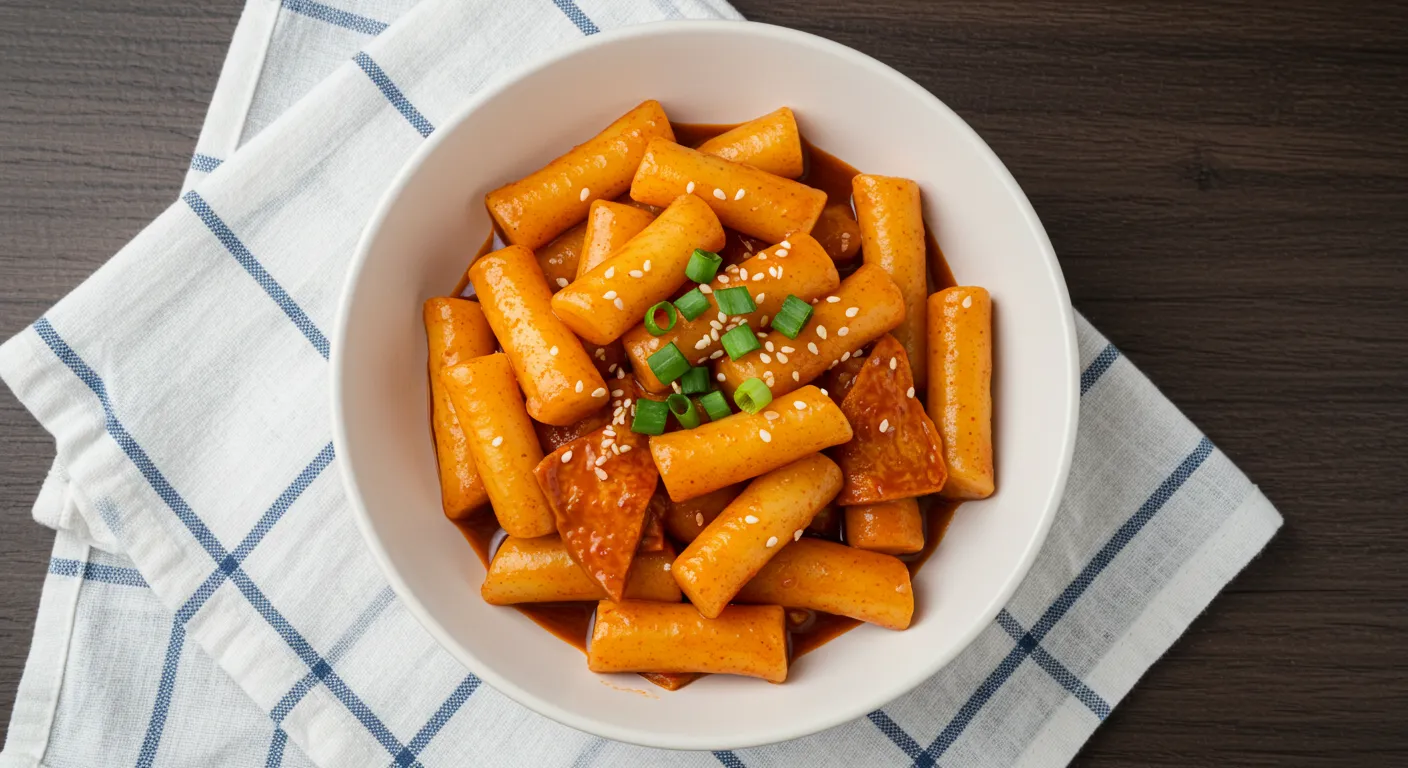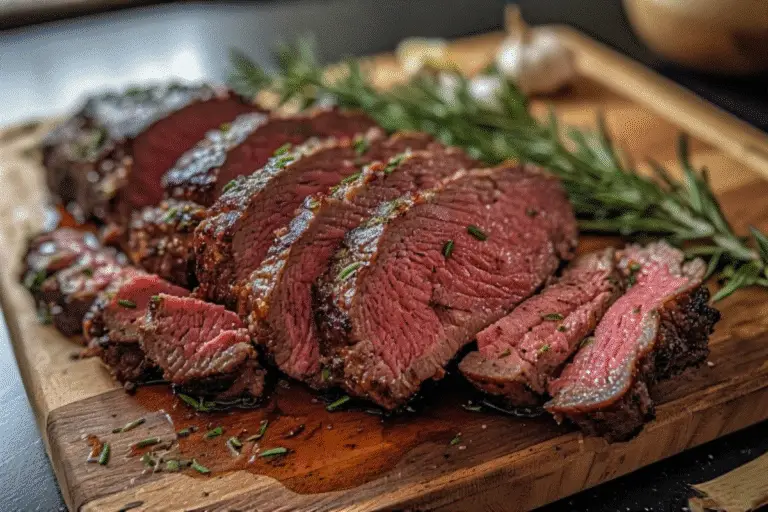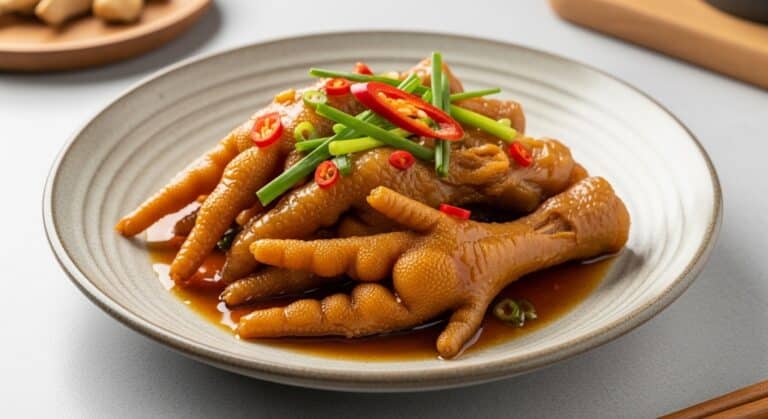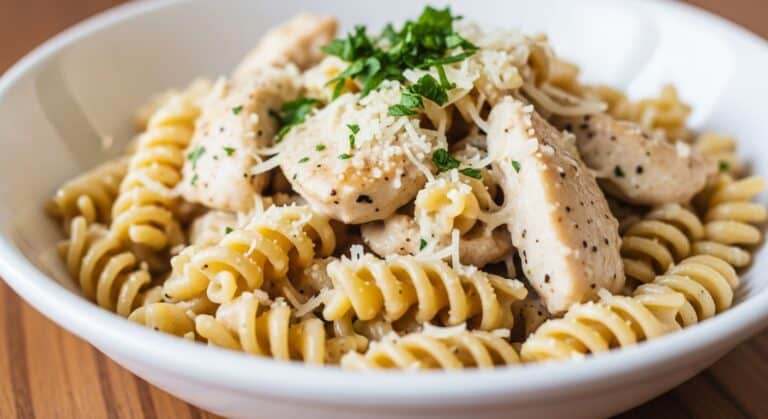The Ultimate Tteokbokki Recipe: How to Make Authentic Korean Spicy Rice Cakes at Home
If you’ve ever craved a dish that perfectly balances chewy, spicy, and sweet flavors, then tteokbokki should be at the top of your list. This iconic Korean street food is more than just a snack — it’s a warm, comforting experience that brings together bold flavors and satisfying textures. Whether you’re new to Korean cuisine or looking to recreate an authentic tteokbokki recipe in your own kitchen, this guide will walk you through every step to make it just right.
As someone who has spent years exploring Korean food, I can tell you there’s something special about the way tteokbokki hits your taste buds. The tender rice cakes soak up a rich, spicy sauce that lingers long after your last bite. It’s no surprise that this dish is loved not only in Korea but around the world. By following this recipe, you’ll learn how to bring that authentic flavor to your table, impress your family or friends, and maybe even find a new favorite comfort food.
What Is Tteokbokki? A Delicious Staple of Korean Cuisine
Tteokbokki (pronounced “tuhk-bo-kee”) is a popular Korean dish featuring chewy rice cakes simmered in a spicy, sweet sauce. If you’re searching for an easy way to enjoy a taste of Korea at home, mastering this Korean food tteokbokki recipe is a fantastic place to start.
In Korea, tteokbokki is more than just street food—it’s a cultural icon. Found everywhere from street vendors to restaurants, it offers a satisfying mix of heat, sweetness, and umami that makes it addictive. The rice cakes, known as tteok, have a dense but tender chewiness that provides the perfect contrast to the thick, flavorful sauce.
This dish dates back centuries but gained immense popularity in the 1950s when it was adapted from a royal court recipe to a more affordable street snack. Today, tteokbokki continues to evolve, with variations like cheese tteokbokki and rose tteokbokki recipe gaining fans worldwide. But no matter the twist, the base recipe remains the heart of this beloved Korean comfort food.
PrintThe Ultimate Tteokbokki Recipe: How to Make Authentic Korean Spicy Rice Cakes at Home
Learn how to make delicious Korean tteokbokki, a popular spicy rice cake dish with savory fish cakes and a rich chili sauce, ready in just 20 minutes.
- Prep Time: 10 minutes
- Cook Time: 10 minutes
- Total Time: 20 minutes
- Yield: 2 1x
- Category: Snacks
- Cuisine: Korean
Ingredients
Main Ingredients:
12 ounces Korean rice cakes, separated
5.3 ounces Korean fish cakes, rinsed with hot water and cut into bite-size pieces
2 cups Korean soup stock (made with dried kelp and dried anchovies)
2 ounces onion, thinly sliced
Tteokbokki Sauce (Mix together):
3 tablespoons Korean chili paste (gochujang)
1 1/2 tablespoons raw sugar
1 tablespoon soy sauce
1 teaspoon minced garlic
1 teaspoon Korean chili flakes (gochugaru)
Garnish:
1 teaspoon toasted sesame seeds
1 teaspoon sesame oil
1 stalk green onion, finely chopped
Instructions
Soak the rice cakes in warm water for 10 minutes if using refrigerated or packaged rice cakes. Skip this step if using fresh, soft rice cakes.
In a shallow pot, bring the Korean soup stock to a boil over medium-high heat. Stir in the tteokbokki sauce ingredients until dissolved.
Add the soaked rice cakes, fish cakes, and sliced onion to the pot. Boil for 3 to 5 minutes until the rice cakes are fully cooked and tender.
Lower the heat and simmer for another 2 to 4 minutes to thicken the sauce and enhance the flavors.
Stir in the sesame oil, toasted sesame seeds, and chopped green onion. Mix quickly and serve immediately while warm.
Nutrition
- Serving Size: 2
- Calories: 381 kcal
- Sugar: 15 g
- Sodium: 1062 mg
- Fat: 6 g
- Carbohydrates: 69 g
- Fiber: 1 g
- Protein: 13 g
- Cholesterol: 14 mg
Essential Ingredients for an Authentic Korean Tteokbokki Recipe
To make a great tteokbokki recipe, using the right ingredients is key. You want the rice cakes to have the perfect chew, the sauce to be balanced between spicy and sweet, and the additions to add layers of flavor.
Here’s a detailed ingredient list laid out for easy reference, along with helpful notes for substitutions if you can’t find something locally.
| Quantity | Ingredient | Notes (Substitutions, Alternatives) |
|---|---|---|
| 12 oz | Korean rice cakes | Soak if refrigerated; cylindrical rice cakes work well too |
| 5.3 oz | Korean fish cakes | Optional; tofu or extra veggies for vegetarian option |
| 2 cups | Korean soup stock | Made from dried kelp & anchovies; use vegetable broth if needed |
| 2 oz | Onion, thinly sliced | Adds sweetness and texture |
| 3 tbsp | Gochujang (Korean chili paste) | Mild or hot depending on your spice preference |
| 1 ½ tbsp | Raw sugar | Brown sugar can be used instead |
| 1 tbsp | Soy sauce | Low sodium is fine |
| 1 tsp | Minced garlic | Fresh garlic enhances flavor |
| 1 tsp | Gochugaru (Korean chili flakes) | Optional, for extra heat |
| 1 tsp | Toasted sesame seeds | Garnish |
| 1 tsp | Sesame oil | Garnish |
| 1 stalk | Green onion, finely chopped | Garnish |
You can often find Korean rice cakes and fish cakes at Asian grocery stores or online. If you’re unable to source them, look for cylindrical rice cakes as a substitute, and feel free to omit fish cakes for a vegetarian-friendly version. The Korean soup stock is traditionally made by simmering dried kelp and anchovies — if this is hard to find, vegetable broth will work fine but the flavor won’t be as authentic.
Step-by-Step Guide to Making the Perfect Tteokbokki
Now, it’s time to dive into the cooking process. This step-by-step approach makes it easy for you to follow along and ensures your tteokbokki turns out perfectly every time.
1. Preparing the Rice Cakes
Start by soaking your refrigerated or packaged rice cakes in warm water for about 10 minutes. This step helps soften the rice cakes and ensures they cook evenly. If you’re using fresh rice cakes, which are already tender, you can skip this step.
2. Making the Tteokbokki Sauce
In a small bowl, combine your gochujang (Korean chili paste), raw sugar, soy sauce, minced garlic, and gochugaru (Korean chili flakes). Mix well until all the ingredients are fully blended. This sauce is what gives tteokbokki its signature spicy and slightly sweet flavor.
The balance of these ingredients is important — too much chili paste can overpower the dish, while not enough sugar will make it less enjoyable. Adjust the spice level according to your taste by varying the amount of gochujang and gochugaru.
3. Cooking the Stock and Sauce
Pour the Korean soup stock into a shallow pot and bring it to a boil over medium-high heat. Once boiling, stir in the tteokbokki sauce mixture until it dissolves completely into the stock. This will create a flavorful base for cooking the rice cakes.
4. Adding Main Ingredients
Next, add the soaked rice cakes, fish cakes, and thinly sliced onions to the pot. Allow the mixture to boil for about 3 to 5 minutes. During this time, the rice cakes will soften and absorb the spicy sauce, while the fish cakes and onions add savory and sweet notes.
5. Simmering and Thickening the Sauce
Once the rice cakes are cooked through, reduce the heat to low and simmer the dish for another 2 to 4 minutes. This extra simmering thickens the sauce and deepens the flavors, resulting in a rich, glossy coating on every bite of rice cake.
6. Final Touches and Garnishing
To finish, stir in the toasted sesame seeds, sesame oil, and chopped green onion. These garnishes add a nutty aroma and fresh bite that elevate the dish. Serve your tteokbokki immediately while warm for the best taste and texture.

Tips for Perfecting Your Korean Tteokbokki Recipe Every Time
Even with a great recipe, little details can make a big difference in how your tteokbokki turns out. Here are some tried-and-true tips to help you get restaurant-quality results in your own kitchen:
- Choose the right rice cakes. Fresh rice cakes are soft and chewy without any soak time needed. If you only have refrigerated or frozen rice cakes, soaking them in warm water for 10 minutes softens them perfectly and helps them cook evenly.
- Balance the sauce. The beauty of tteokbokki sauce lies in its harmony of spicy, sweet, and savory flavors. Adjust the amounts of gochujang and sugar to match your personal taste, but remember to keep that balance — too much sugar will make it overly sweet, while too much chili paste can overwhelm the dish.
- Simmer, don’t rush. Once your rice cakes are cooked, lowering the heat and allowing the sauce to simmer thickens it beautifully and deepens the flavor. This step is key to getting that signature glossy coating.
- Add texture variety. Including fish cakes is traditional and adds a lovely savory contrast. If you prefer vegetarian options, try adding mushrooms, tofu, or extra vegetables like cabbage or carrots for more texture.
- Serve immediately. Tteokbokki tastes best fresh off the stove when the rice cakes are soft and the sauce is still warm and sticky. It can get chewy and tough if left to sit too long.
Exploring Variations: Rose Tteokbokki Recipe and Beyond
Once you’ve mastered the classic Korean tteokbokki recipe, you might want to experiment with popular variations that add new flavors and textures.
Rose Tteokbokki Recipe
This version adds cream or cheese to the spicy sauce, creating a creamy, slightly tangy flavor that balances the heat beautifully. To make rose tteokbokki:
- Prepare the classic sauce as usual.
- Stir in a splash of heavy cream or add shredded mozzarella during the final simmer.
- Let the cheese melt and mix well before serving.
This variation has become popular for its rich taste and smooth texture, making it a favorite for those who love cheesy dishes but don’t want to lose the spicy kick.
Other Popular Variations:
- Cheese Tteokbokki: Topped generously with melted cheese, this version combines gooey cheese with spicy rice cakes.
- Seafood Tteokbokki: Add shrimp, squid, or mussels along with fish cakes to introduce a briny, fresh flavor.
- Jjajang Tteokbokki: Replace the spicy sauce with black bean paste for a milder, savory twist.
Trying different versions lets you customize the dish to suit your cravings and impress your guests with your Korean cooking skills.
Nutritional Benefits of Tteokbokki and What to Expect
While tteokbokki is a delicious treat, it’s helpful to understand its nutritional profile so you can enjoy it mindfully.
Per serving, a typical Korean tteokbokki recipe contains approximately:
- Calories: 381 kcal
- Carbohydrates: 69 grams
- Protein: 13 grams
- Fat: 6 grams
- Sodium: 1062 mg
The dish is carb-heavy due to the rice cakes, which provide energy and a satisfying texture. The fish cakes add protein, while the sauce contains spices and a bit of sugar for flavor. Due to its sodium content, it’s best enjoyed in moderation, especially if you’re watching your salt intake.
If you’re looking to lighten the dish, consider:
- Using less soy sauce or low-sodium versions
- Adding more vegetables like cabbage or carrots for fiber and volume
- Omitting fish cakes and including tofu or mushrooms as a lower-fat protein alternative
Where to Find Authentic Ingredients for Your Tteokbokki Sauce Recipe
Authentic ingredients help bring your Korean tteokbokki recipe to life. Here’s a quick guide on sourcing the essentials:
- Gochujang (Korean chili paste): This thick, fermented chili paste is available at most Asian grocery stores and online. Choose one labeled “mild” or “hot” depending on your heat preference.
- Gochugaru (Korean chili flakes): Adds smoky heat; available in Korean markets. If unavailable, use crushed red pepper flakes but expect a slightly different flavor.
- Korean rice cakes: Often sold fresh or frozen in the refrigerated section of Asian stores. If you can’t find them, look for cylindrical or tube-shaped rice cakes.
- Korean fish cakes: Sold pre-packaged, usually near seafood or frozen foods. Can substitute with tofu or omit for a vegetarian version.
- Soup stock ingredients: Dried kelp and dried anchovies are traditional; these can be bought in Asian markets to make your own stock, or use a good quality vegetable or seafood broth as a shortcut.
- Soy sauce: Use regular or low-sodium based on your taste and dietary needs.
Using authentic ingredients will deepen the flavor and make your homemade tteokbokki taste like it came straight from a Korean street vendor.
Frequently Asked Questions About the Korean Tteokbokki Recipe
Q1: What makes tteokbokki rice cakes different from regular rice cakes?
A: Korean rice cakes (tteok) are chewy and dense, designed to hold up in cooking without falling apart. They are typically cylindrical or oval-shaped and made from glutinous rice flour.
Q2: Can I make tteokbokki without fish cakes?
A: Yes! Fish cakes add a savory note, but you can omit them or replace with tofu, mushrooms, or extra vegetables for a vegetarian-friendly recipe.
Q3: How spicy is this tteokbokki recipe?
A: The spice level depends on how much gochujang and gochugaru you use. The base recipe has a moderate heat that can be adjusted to your liking.
Q4: What is rose tteokbokki recipe?
A: Rose tteokbokki is a creamy variation of the classic spicy rice cake dish, made by adding cream or cheese to the sauce for a rich and mellow flavor.
Q5: Can I prepare tteokbokki sauce recipe in advance?
A: Yes, you can mix the sauce ingredients ahead of time and store in the fridge for up to a week. Just stir it into the stock when you’re ready to cook.
How to Serve and Enjoy Your Tteokbokki
Tteokbokki is incredibly versatile. Here are some serving suggestions to elevate your meal:
- Serve it hot and fresh as a snack or light meal.
- Pair with steamed rice or fried eggs to balance the spice.
- Add a side of pickled radish or kimchi for tangy contrast.
- Garnish with extra green onions, toasted sesame seeds, or shredded cheese for added flavor and texture.
If you want to recreate a full Korean street food experience, consider making other classic dishes like kimbap (rice rolls), hotteok (sweet pancakes), or mandu (dumplings) alongside your tteokbokki.
Wrapping Up Your Korean Tteokbokki Recipe Adventure
By now, you should feel confident making an authentic Korean tteokbokki recipe from scratch. From selecting ingredients to simmering the sauce just right, each step builds toward that satisfying dish that’s spicy, sweet, and full of flavor. This recipe not only introduces you to the heart of Korean street food but also invites you to explore variations like the creamy rose tteokbokki recipe or cheesy tteokbokki to suit your cravings.
Remember, cooking is as much about experimentation and fun as it is about following instructions. Feel free to adjust spice levels, swap ingredients, or add your personal touch. The joy of tteokbokki is in its versatility and comfort.








